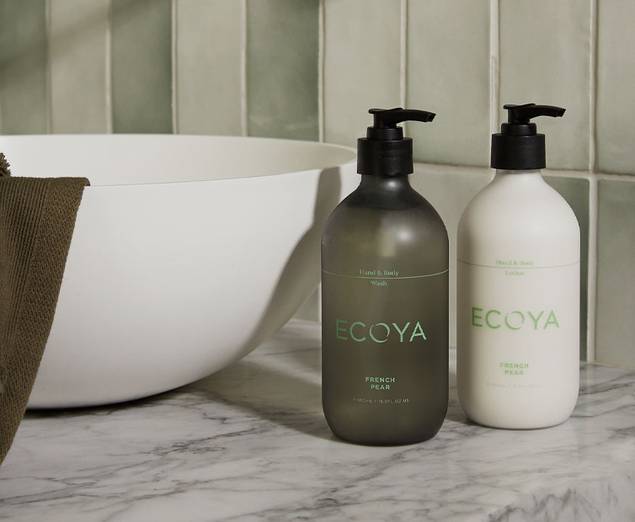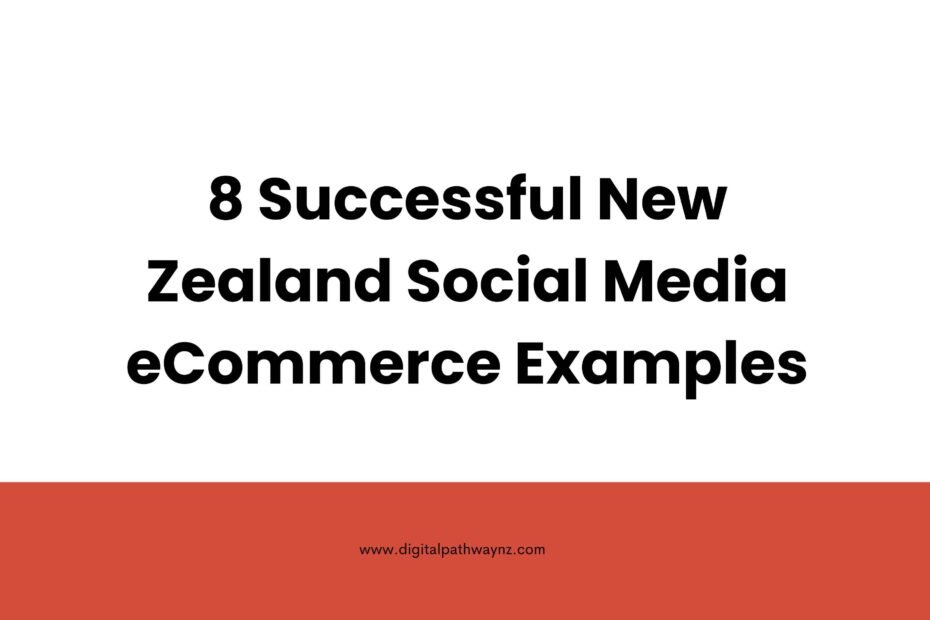Creating a successful social media eCommerce campaign requires a combination of creativity, strategy, and understanding of the target market. In New Zealand, several brands have executed standout social media eCommerce campaigns that have not only boosted their sales but also significantly enhanced their brand presence. Below are eight in-depth examples of successful social media eCommerce campaigns from New Zealand, including their objectives, timeframes, budgets, results, and key takeaways.
- 1. Untouched World – Sustainable Fashion Campaign
- 2. Ecoya – Mother’s Day Promotion
- 3. Allbirds – Back to School Campaign
- 4. Les Mills – Digital Fitness Subscriptions
- 5. Huffer – #Home is Where the Huffer is
- 6. Icebreaker – #MoveToNatural Campaign
- 7. Wellington Chocolate Factory – Limited Edition Easter Eggs
- 8. NZ Post – Support Local Campaign
- Conclusion
1. Untouched World – Sustainable Fashion Campaign

Objective: To increase brand awareness and drive online sales of their sustainable fashion line during the winter season.
Timeframe: June to August 2022 (Southern Hemisphere Winter)
Budget: $20,000 NZD
Result: The campaign led to a 30% increase in online sales, with a 40% growth in social media followers, particularly on Instagram.
Takeaways/Insights:
- Highlighting sustainability and ethical production resonated well with the environmentally conscious New Zealand audience.
- Collaborating with local influencers who shared the brand’s values amplified the campaign’s reach and engagement.
2. Ecoya – Mother’s Day Promotion

Objective: To boost sales of Ecoya’s premium candles and home fragrances leading up to Mother’s Day.
Timeframe: April to May 2023
Budget: $15,000 NZD
Result: The campaign achieved a 25% increase in sales compared to the same period the previous year, and the brand’s Mother’s Day gift sets sold out within days.
Takeaways/Insights:
- Seasonal campaigns tied to specific holidays can create a sense of urgency and drive purchases.
- Using high-quality, visually appealing content on Instagram and Facebook helped to effectively showcase the product’s luxury appeal.
3. Allbirds – Back to School Campaign
Objective: To promote Allbirds’ eco-friendly footwear as the ideal choice for back-to-school shopping.
Timeframe: January to February 2023
Budget: $30,000 NZD
Result: The campaign resulted in a 35% increase in online traffic, with a significant spike in sales of their children’s shoe line.
Takeaways/Insights:
- Aligning product launches with the back-to-school season can tap into a well-timed consumer demand.
- Utilizing social proof, such as customer reviews and testimonials, effectively built trust and influenced purchasing decisions.
4. Les Mills – Digital Fitness Subscriptions

Objective: To drive subscriptions for their online fitness platform during the COVID-19 pandemic.
Timeframe: March to May 2020
Budget: $50,000 NZD
Result: Les Mills saw a 60% increase in digital subscriptions and a substantial increase in their YouTube and Instagram following.
Takeaways/Insights:
- Offering free trials during uncertain times encouraged sign-ups and long-term subscriptions.
- Engaging content that included live workouts and fitness challenges kept the audience motivated and engaged.
5. Huffer – #Home is Where the Huffer is

Objective: To launch Huffer’s 2024 winter collection under the campaign “Home is Where the Huffer is,” aimed at promoting comfort and connection during the winter season. This campaign was crafted to resonate with the audience’s longing for warmth and coziness in both their clothing and their environment, reflecting the brand’s iconic streetwear style with a focus on comfort.
Timeframe: May to August 2024
Result: The campaign was highly successful, generating significant buzz across social media platforms and driving a strong increase in both online and in-store sales. The “Home is Where the Huffer is” collection sold out faster than expected, reflecting the campaign’s impact. The campaign also enhanced brand loyalty among Huffer’s core customer base and attracted new followers on Instagram and Facebook.
Takeaways/Insights:
- The campaign effectively captured the essence of home and comfort, which resonated strongly with the target audience during the winter months.
- Strategic use of user-generated content (UGC) and influencer partnerships helped expand the campaign’s reach, engaging a wider audience and driving sales.
- The focus on high-quality, relatable content allowed Huffer to strengthen its position as a leading streetwear brand in New Zealand.
This example highlights the importance of aligning a brand’s message with current seasonal themes and consumer emotions, which can significantly enhance engagement and drive sales in a competitive market.
6. Icebreaker – #MoveToNatural Campaign
Objective: The #MoveToNatural campaign aimed to promote Icebreaker’s commitment to sustainable and natural performance wear, driving awareness and sales for their merino wool products. The campaign emphasized the benefits of natural fibers over synthetic alternatives, aligning with the growing consumer trend towards sustainability.
Timeframe: September to December 2022
Result: The campaign was highly successful, leading to a significant increase in online sales and social media engagement. Icebreaker’s social media following grew substantially, and the campaign generated widespread media coverage in New Zealand and internationally.
Takeaways/Insights:
- Aligning the brand’s messaging with global sustainability trends resonated strongly with eco-conscious consumers.
- The campaign’s use of educational content, explaining the benefits of natural fibers, helped build consumer trust and loyalty.
- Collaborations with environmental influencers and ambassadors amplified the reach and credibility of the campaign, driving both brand awareness and conversions.
Icebreaker’s #MoveToNatural campaign is a great example of how a brand can effectively leverage its core values and mission to engage consumers and drive eCommerce success.
7. Wellington Chocolate Factory – Limited Edition Easter Eggs
Objective: To drive sales of a limited edition Easter egg collection.
Timeframe: March to April 2023
Budget: $8,000 NZD
Result: The campaign resulted in the limited edition products selling out within a week, with a 25% increase in overall website traffic.
Takeaways/Insights:
- Limited-time offers create a sense of scarcity that motivates quick purchasing decisions.
- Collaborations with local artists to design the packaging provided a unique selling point and made the product more appealing as a gift.
8. NZ Post – Support Local Campaign
Objective: To encourage New Zealanders to support local businesses during the pandemic by promoting eCommerce shipping services.
Timeframe: June to September 2020
Budget: $40,000 NZD
Result: The campaign successfully raised awareness about the importance of supporting local businesses, leading to a 30% increase in small business sign-ups for their eCommerce shipping services.
Takeaways/Insights:
- Emotional appeals that emphasize community support and solidarity can significantly enhance campaign effectiveness.
- Multi-platform promotion, including Facebook, Instagram, and LinkedIn, helped reach different segments of the target audience effectively.
Conclusion
These eight examples demonstrate how New Zealand brands have successfully harnessed the power of social media to drive eCommerce success. Each campaign was tailored to specific objectives, from increasing sales to building brand awareness and community engagement. Key takeaways include the importance of understanding the local market, leveraging user-generated content, and aligning campaigns with cultural and seasonal events. By adopting these strategies, businesses in New Zealand can effectively connect with their audience and achieve significant eCommerce growth.
- How to Market Through Sponsorship in New Zealand: A Case Study of the 2024 America’s Cup
- How New Zealand Can Utilise “New Zealand at the Olympics” for Digital Marketing
- The Alarming Rise of “Drug Lollies” in New Zealand: What’s Behind the Search Intent?
- Why AI is a Game-Changer for Cross-Border Marketing in 2024
- Working with a Full-Service Marketing Agency in New Zealand: Key Do’s, Don’ts, and Understanding Costs
